When buying new equipment, few people look at the power requirements, but in vain. In old houses, when installing powerful equipment, there are problems: it may be necessary to pull a separate line. So connecting the hob to maintain the warranty requires compliance with all the requirements of the PUE. This means that you need a dedicated line with an appropriate wire cross-section, with a circuit breaker installed on the line. This line can end with a special socket or maybe a terminal box. If a socket is installed, then the cable from the hob must end with a power plug; when installing the terminal box, the ends of the wires are terminated with clamps, you can tin them and roll them into a ring.
Hob connection diagrams
Almost all new models of European-made hobs can be connected to networks with a different number of phases. In our country, there are two standards: a single-phase 220 V network and a three-phase 380 V. In some houses, 220 V comes with two phases. If we talk about the number and colors of wires, then this is what can be:
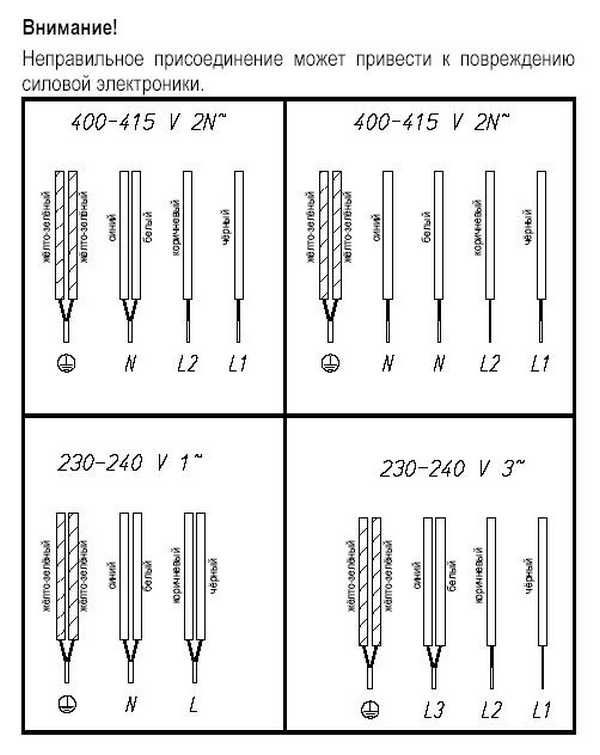
In order not to be mistaken, even if you see all the named colors, it is better to check everything (call): builders often get confused during installation. To avoid trouble, check and sign (hang tags).
The peculiarity of hobs is that they often come without a power cord. This is not from the greed of manufacturers, but because they can be connected according to several schemes, in which from three (we have - from two) to six wires are used. Therefore, in addition to the wire for connecting to the electricity meter, you also need to buy a network cable. You take it of the same section as in the lead one, only it is more convenient to use multi-core - they bend well.
Connection to a single-phase network
Most of the questions arise if it is necessary to connect an electric hob to a 220 V network. Most often, the panel has 6 terminals: three phase - L1, L2, L3, two neutrals (zero) N1 and N2 and PE grounding, and in the apartment there are only three or even two wires (in old houses). It's not scary - you need to install jumpers, but first we look for where the terminals are located on the hob.

To get to the wires, we find a small cover on the back side. It can be metal or plastic, it is fastened to the case with screws or snaps into place. We remove it. Inside there is a six-pin terminal block. If there are three wires in the apartment, the contacts are connected on the hob:
- three phase wires together (L1, L2, L3);
- two neutrals N1 and N2;
- The ground (green) wire connects to ground.
If the equipment was bought in a store, it should come with jumpers installed, which connect all the indicated wires. In this case, the wires of the power cord are connected to each group of contacts: one to the phase, one to the neutral, and yellow-green to the ground.
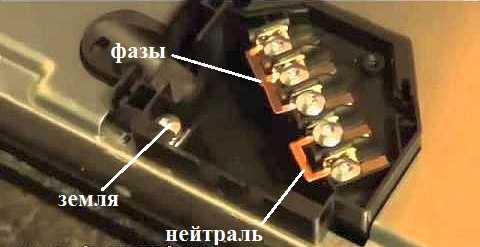
Connecting the hob to the mains: this is how the jumpers should be for a single-phase 220 V network
If the jumpers are lost somewhere, you can make them from a copper wire with a cross section of 6 mm 2. To make it easier to connect, use tips - fork or ring, whichever is more convenient for anyone. It is more convenient to clamp stranded wires in them, and it is easier to bend rings from one core.

With three wires in a 220 V network, the hob connection will look like in the photo below. Please note: the "ground" wire is connected to the upper contact of the socket, the phase can be on the right or left - not so important, but the wires in the socket must be routed in the same way. You can't be wrong.
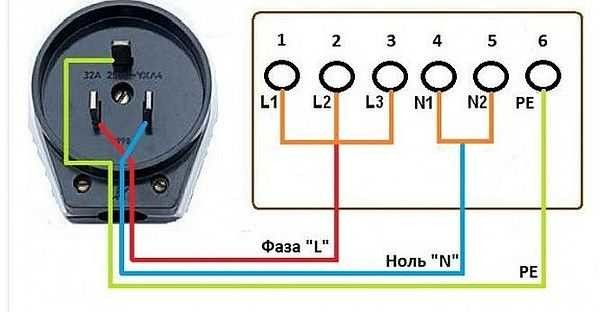
If there are only two wires from the meter, you can do it in two ways:
- make a separate ground loop
- Do not use the "earthen" outlet at all.
Installation of a ground loop is necessary if you want to keep the warranty: when connected without grounding, it is invalid and in case of any damage to the hob (even an obvious factory defect), you will be denied warranty repair or replacement of equipment with a serviceable one.
How to connect the hob 4 wires
Many Electrolux and Zanussi models come with an installed cord. It seems to be good, but it has four wires: zero, ground and two phase wires (black and brown). If there are three of them in the apartment, it is not clear which ones and what to do: connecting a four-core wire from the hob has its own nuances.
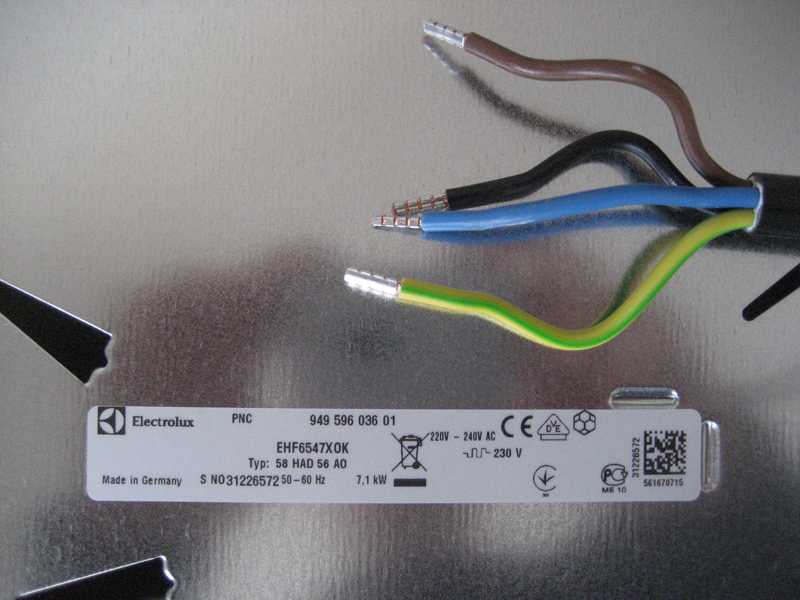
In this case, you also get to the location of the terminals on the back of the case. The cover in such models is plastic, and not on bolts, but on clips. Just pry it off with a screwdriver.
Opening the box, look for the exit "ground" (yellow-green). There is a jumper for two entrances next to it. Take it and combine two phase outputs - L1 and L2 (black and brown conductors are connected). Just loosening the contacts a little (by turning the screws with a screwdriver), slip the jumper, then tighten the contacts. Everything else is unchanged. In the future, when connecting the plug, use only the brown wire, and insulate the black one well (preferably with a heat-shrinkable tube).
Connecting the hob to a 380 V three-phase network
To connect the hob to a 3-phase network, you need a cable of five copper conductors with a cross section of 2.5 mm 2. Solid or stranded - optional.
In this case, a jumper is needed only on two neutral wires - N1 and N2 (in some models there is only a digital designation, 4 and 5 outputs are combined there). There is no need to change anything on the phase wires: one of the phase wires is connected to each phase.
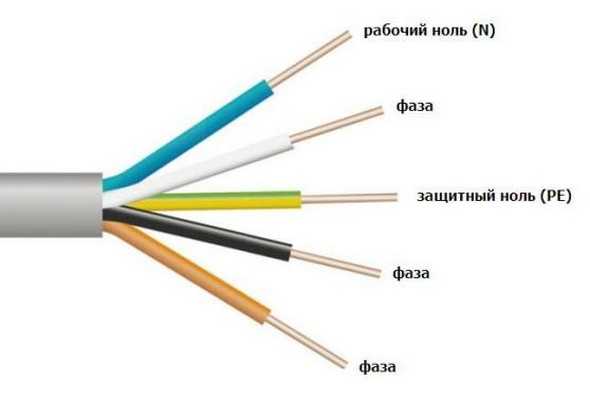
The cable may have the same color as in the photo, or it may be different. According to the second standard, the phases have colors: red, yellow, green. It's not that important. It is much more important to correctly connect all the wires to the plug, and also not to confuse them on the outlet.
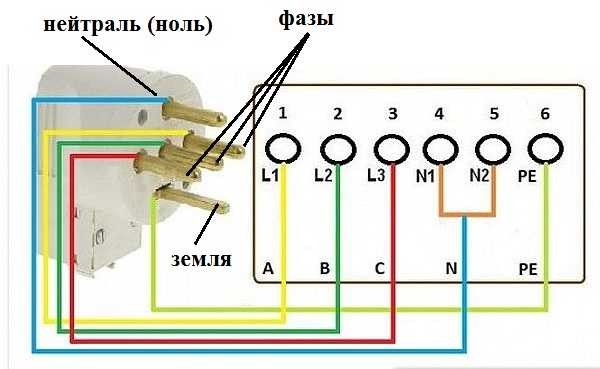
Please note that in this case, the neutral is connected at the top, the ground is at the bottom, and the phase wires are in the middle. The same procedure should be repeated for the outlet.
If a cord of 4 conductors comes from the equipment, one of the phases on the plug is simply not used. What - all the same, just do not use the same output in the outlet.
220V with two phases
If there are four wires in the apartment and from the panel, everything is simple. Connect the corresponding colors. There are usually no discrepancies: phases are black and brown, zero is blue, earth is yellow-green. Difficulties arise if there are six outputs or the cord comes with five wires.
As you probably guessed, two phases combine. The union of the two neutrals (if any) remains in force. Everything else is connected to the corresponding pins of the plug.
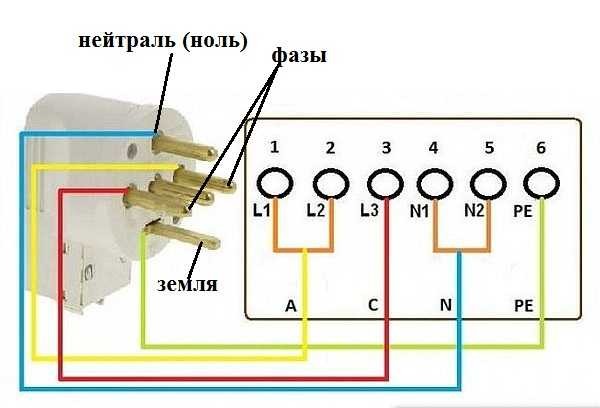
The location is the same: neutral at the top, ground at the bottom, in the middle of the phase. Do not forget which of the phase outputs you have is empty, so as not to redo it.
Choice of cable and machines
As you already understood, you will have to lay a separate line from the shield to the hob. Most likely, you will lay it secretly, in a box, corrugated hose or strobe. In this case, it is allowed to use only a copper cable:
- for a single-phase network with an electrical power of 5.5 kW to 7.7 kW, a cable with a conductor cross-section of 6 mm 2 (VVG 3 * 6 or PVS 3 * 6);
- for three-phase up to a power of 16.4 kW, 5 * 2.5 mm 2 is enough (KuVV 5 * 2.5 or KuGVV 5 * 2.5);
After exiting the counter, you must install the machine. This requirement is mandatory. There are also recommendations - to install an RCD (residual current device) to protect the equipment and ensure proper safety. Such a bundle allows you to turn off the power not only in case of overload (the machine is triggered), but also in case of problems with insulation (the RCD is triggered). RCDs are not the cheapest thing, but the hob is incomparably more expensive, so it's better not to save money.
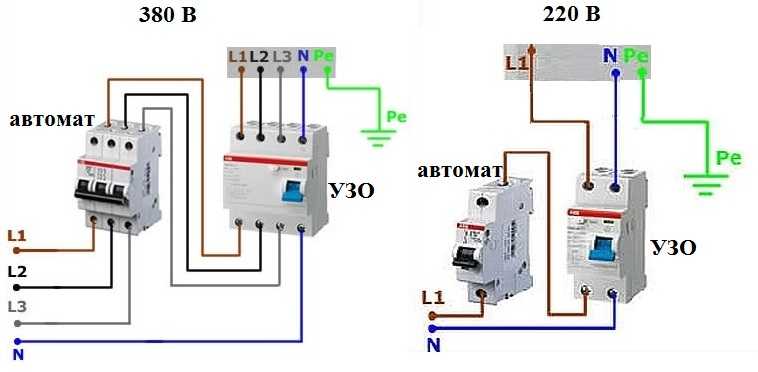
About the parameters of this equipment:
- for a single-phase network, we take a 32 A machine, a 40 A RCD with a differential shutdown current of 30 mA.
- for a three-phase one - a 16 A circuit breaker and a 25 A RCD with a differential trip current of 30 mA.
They are connected to each other with segments of wires of the same section (diagram in the photo above): in a 220 V network of 6 mm 2, in a 380 V network of 2.5 mm 2.
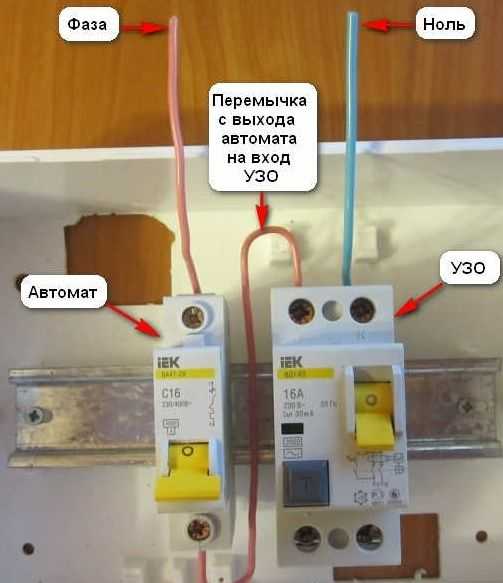
Socket and plug
The hob must be connected using power outlets and plugs or a terminal box. Power sockets and plugs are designed for currents exceeding 10 A, made of special plastic, and may have a cover. The selection rule is simple: their rated current must be no less than the machine's current. That is, to connect an electrical appliance up to 7.7 kW to a single-phase network, we take 32 A, for a three-phase one - 16 A.
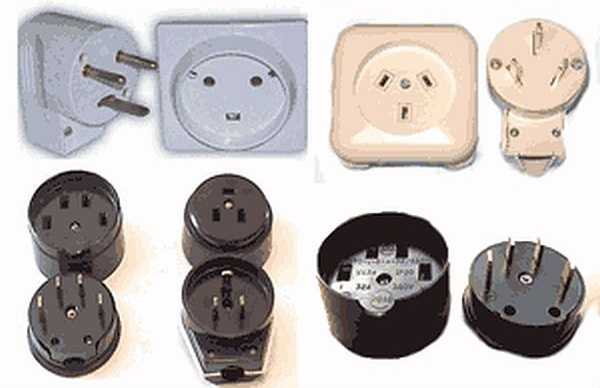
There is no single standard, so the shape and location of the pins may be different, it is important that the required number of contacts and the electrical characteristics are consistent. It's clear: it's better to trust trusted brands, not Chinese products.
It is possible to connect the cable from the device and the power supply in the terminal box. This method is also called a plugless connection, "direct" or "direct". It is more reliable, but to turn off the stove you will have to go to the electrical panel and turn it off with a switch on the RCD or machine.

For a three-phase connection, it is better to use a Schneider Electric 102x100x37 IP44 40A (KLK-5S) box. It's not cheap, but reliable and looks decent: you don't have to hide it. It can also be used for a 220 V network - a wire with a cross section of 6 mm 2 in the terminals will become and the extra phases will simply be empty. To connect, wires are inserted into the holes on the side, and they are tightened with bolts, the caps of which are visible in the photo.
As you can see, at the top there are three pairs of contacts for connecting phases (1,2,3). Below is for earth and neutral. On the one hand, a power cable is started, on the other, from an electrical appliance.
If you wish, you can save money and buy a simple block, but with good quality contacts and a separate mounting box with a cover.
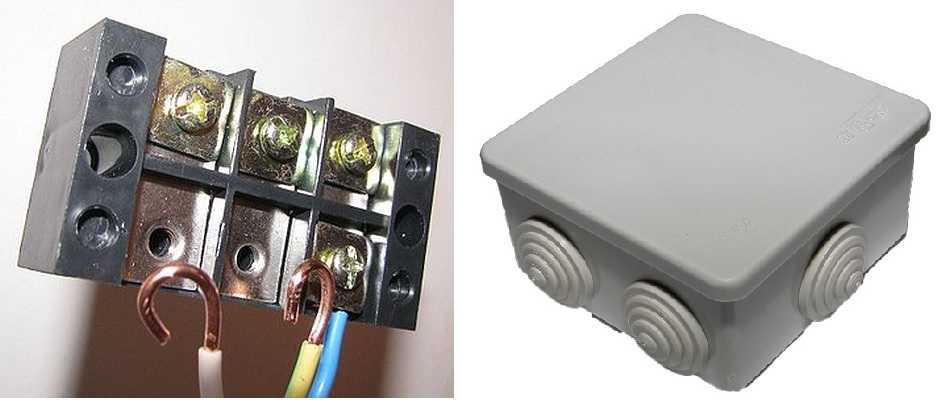
The wires in such terminal blocks are connected simply: rings are formed from the stripped end of the copper wire (as in the photo above), into which small screws are inserted with plates put on them. The wire is inserted into the socket, the contact is tightened with a screwdriver.
If the wire is stranded, it is problematic to make a ring out of it. Then you can use the tips (photo at the beginning of the article). They are crimped with pliers (can be replaced with pliers).
These are all the highlights. Now, connecting the hob yourself will not be a problem. The same rules apply when connecting other equipment of the same power. For less powerful ones, it will only be necessary to take a smaller cross-section of conductors and a lower rating of the machines.

